
What Carney’s win means for environment and climate issues in Canada
Mark Carney and the Liberals have won the 2025 election. Here’s what that means for...
The sea is calm and, for the moment, relatively quiet. But marine ecologist Kieran Cox is about to change that. He hits play and suddenly the deep hum of a large ship surging through ocean swells emanates from a waterproof speaker. Sound waves ripple toward a lush underwater forest off the west coast of Vancouver Island.
Cox, a postdoctoral fellow at Simon Fraser University, has a theory that kelp forests may offer sea creatures a quiet refuge from a growing barrage of ocean noise. As they disappear, destroyed by hungry urchins and thinned out by warming seas, he and other scientists are racing to understand what could soon be lost. “We’re losing kelp forests at a pretty alarming rate in some places,” Cox said.
It’s early September and nearing the end of Cox’s field season in Barkley Sound. Today is a demonstration of the noise experiments he’s been running all summer, usually with underwater recorders to measure any shifts in volume as the sound travels through the stand of giant algae. Suddenly, a seal pops its head above water, and Cox, wanting to protect it from the noise, halts the experiment. “Oh no, let’s pull that up,” he says, and the speaker is lifted from the water.
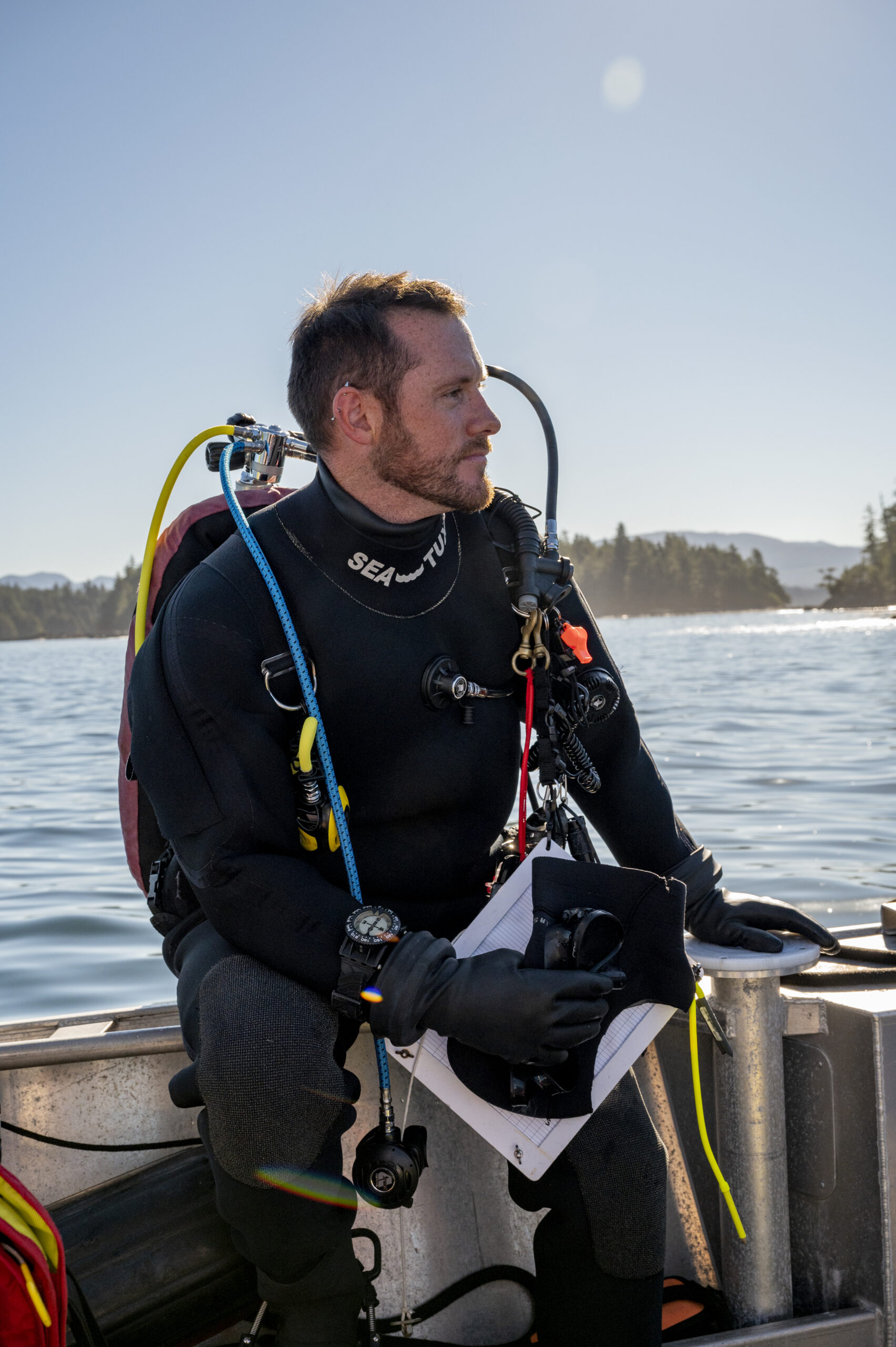
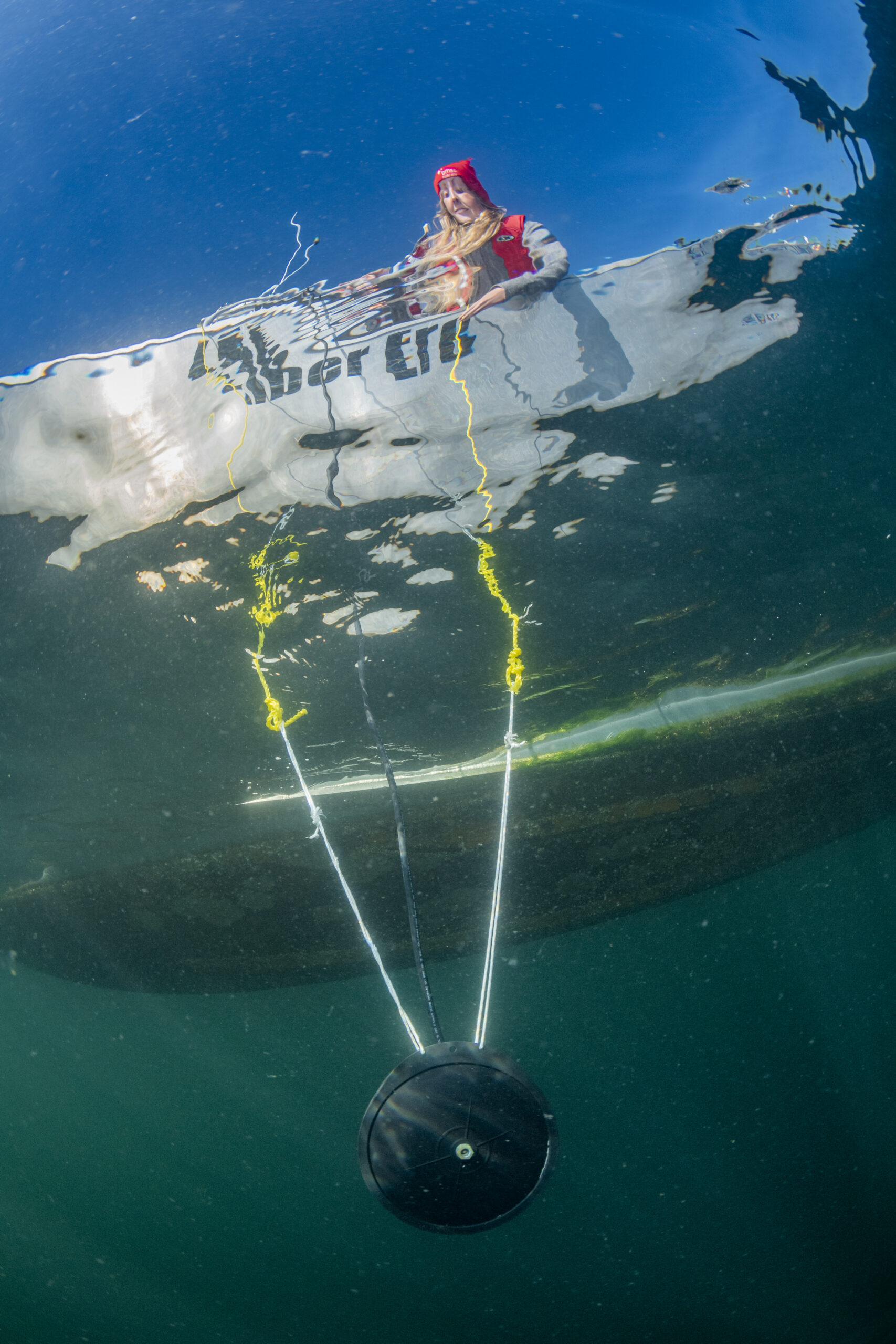
Seals, like whales and other mammals, are particularly sensitive to sound, but all kinds of sea creatures hear. They rely on sound to find mates or alert them to danger. But a cacophony of human made noise is drowning out the sounds of nature — and it’s only getting louder.
If Cox’s hypothesis proves true, it could further underscore the need to protect and restore an ecosystem that serves as a nursery for herring and other forage fish. Herring are food for salmon, which are in turn eaten by endangered southern resident killer whales. The research is timely for another reason too. Canada is currently developing a strategy to reduce the harm from ocean noise. Maybe kelp could be part of the solution.
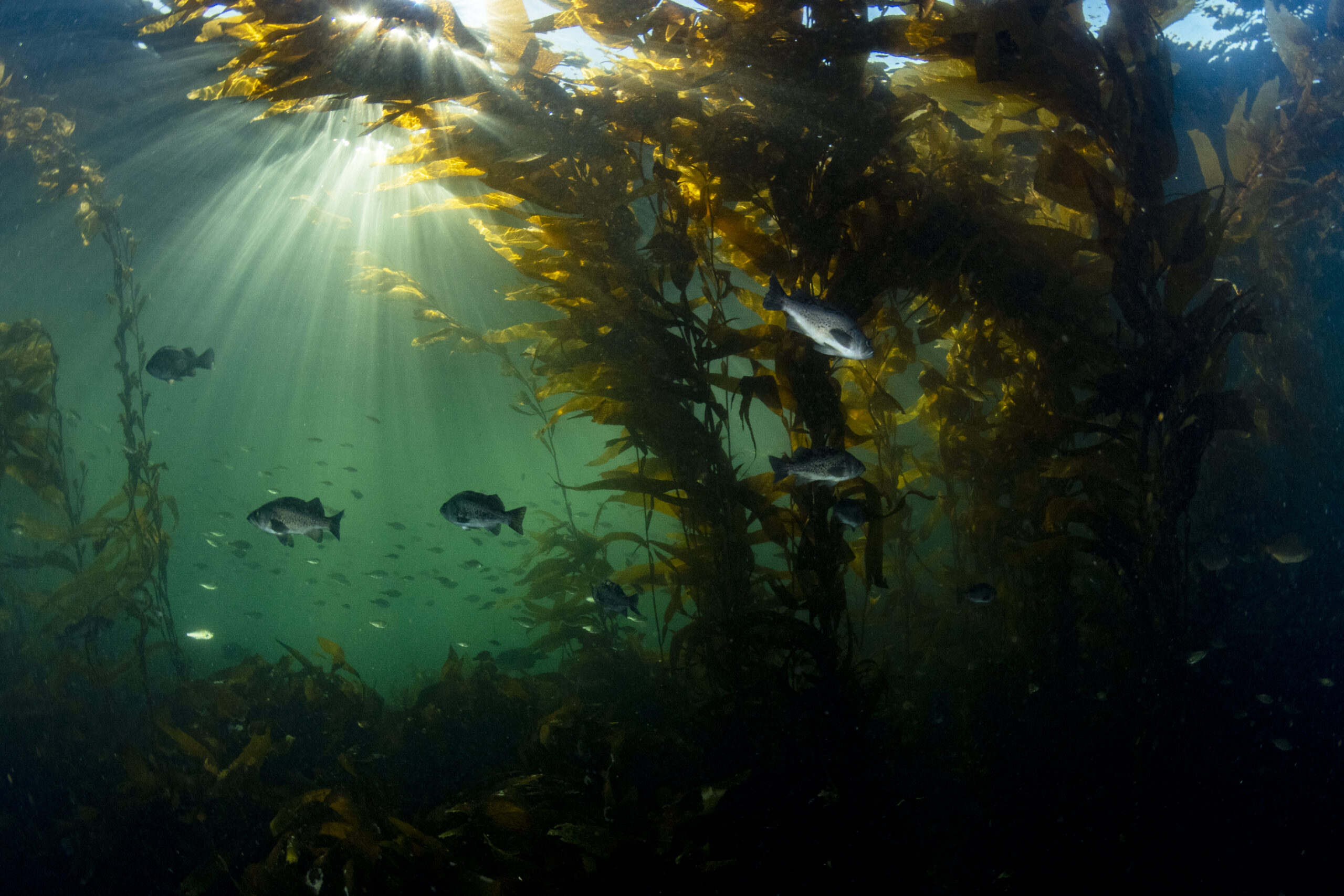
Drenched in dew, the Bamfield Marine Sciences Centre glimmers under the pastel skies of a late summer morning. Recreational fishing boats are already on the move, puttering out through the inlet by the time Cox wanders into the kitchen of his shared cabin.
He starts each day with a quad shot americano and has another coffee in hand as he heads out the door with his colleagues, past the seaweed drying on the porch railing. It’s a short trek downhill to the dive shed. Here, the team readies their dry suits, air tanks, life jackets and totes of various scientific equipment. Then a black bear ambles onto the scene — and sound erupts. There’s clapping, yelling and the sharp blasts of a whistle.
Not all noise humans create is meant to affect wildlife, but a lot of it does. Zebra finch chicks, for instance, struggle to learn their melodies against the constant drone of traffic, which can also make bats less effective hunters. For humans, noise is a known stressor. It can make it impossible to sleep, damage our hearing and is even linked to high blood pressure, a risk factor for heart disease. Underwater, the impacts of noise can be even more intense — sound waves travel faster and farther through water than they do through air.
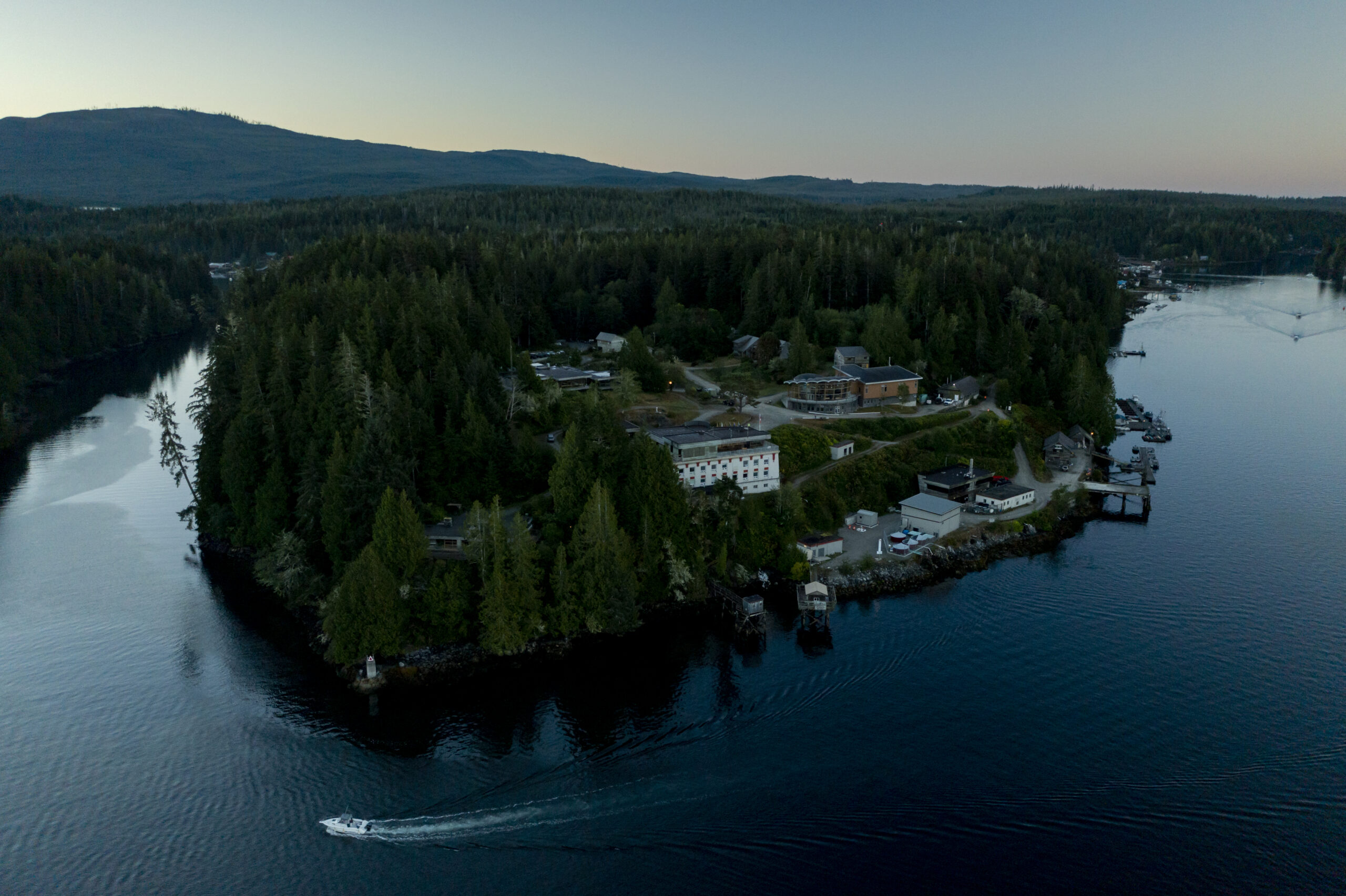
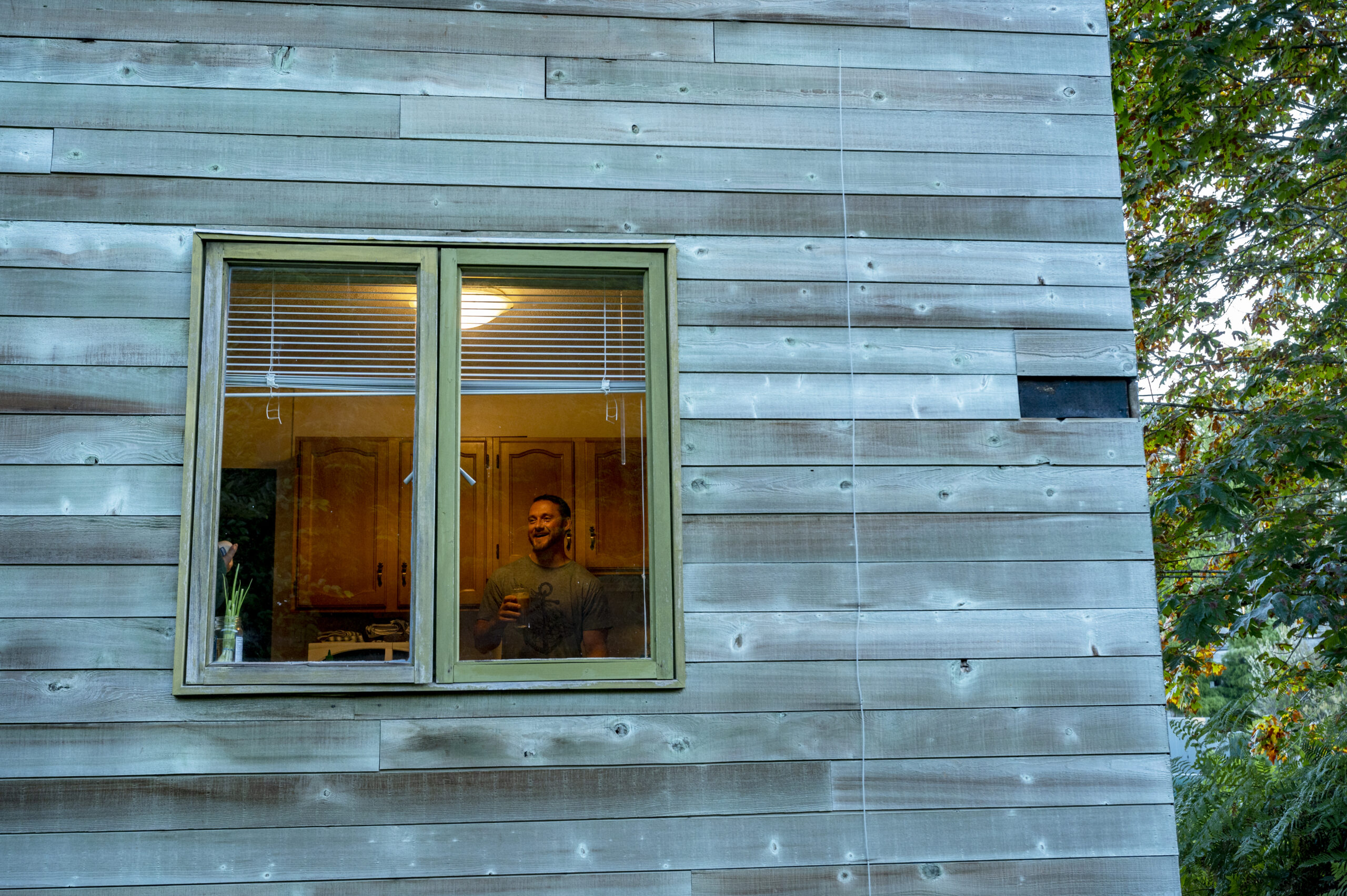

In the dim underwater world, marine animals rely heavily on sound to communicate, find food and protect themselves from predators. The ocean reverberates with their clicks, squeaks, whistles, wails, grunts and groans. The sounds dolphins, sea lions and whales make are familiar by now, but fish make noises too. “They’re bubbling at each other, they’re singing to each other, they’re humming to attract their mates,” said Cox, whose research is supported through a Liber Ero Fellowship and the Natural Sciences and Engineering Research Council of Canada.
Fish don’t need external ears to hear because their bodies are roughly the same density as water. “The sound wave literally just … goes right into the side of their head,” Cox explained. And as it passes through their bodies, it strikes the otolith, a small bone that helps fish hear.
Ocean noise impacts marine life in different ways, depending on the pitch, volume and hearing capacity of affected species among other factors, Cox said. A fish startled by noise may use up vital energy trying to escape or miss the chance to feed. Its stress levels are likely to rise. The roar of ocean tankers might mask fish sounds, impeding communication, or cause temporary hearing loss, leaving fish more vulnerable to predators. Some of this may seem a bit trivial, Cox said, but he warned it can take a toll on a population when 10,000 fish are rendered even temporarily deaf.
Noise can also impede reproduction. One study found male shore crabs are less likely to mate against a backdrop of ship noise. And, as the intensity of noise ramps up, so can the consequences. In a 2012 study, some fish exposed to the explosive sound of steel pillars being pounded into the sea floor suffered ruptured swim bladders and internal bleeding in worst-case scenario laboratory experiments.
Without new measures to address it, the impact of noise from massive ships crisscrossing the oceans or construction of everything from port expansions to oil platforms and ocean wind farms, could get worse. A recent study in the journal Earth’s Future found sound may travel even faster in warmer waters — and the ocean is heating up.
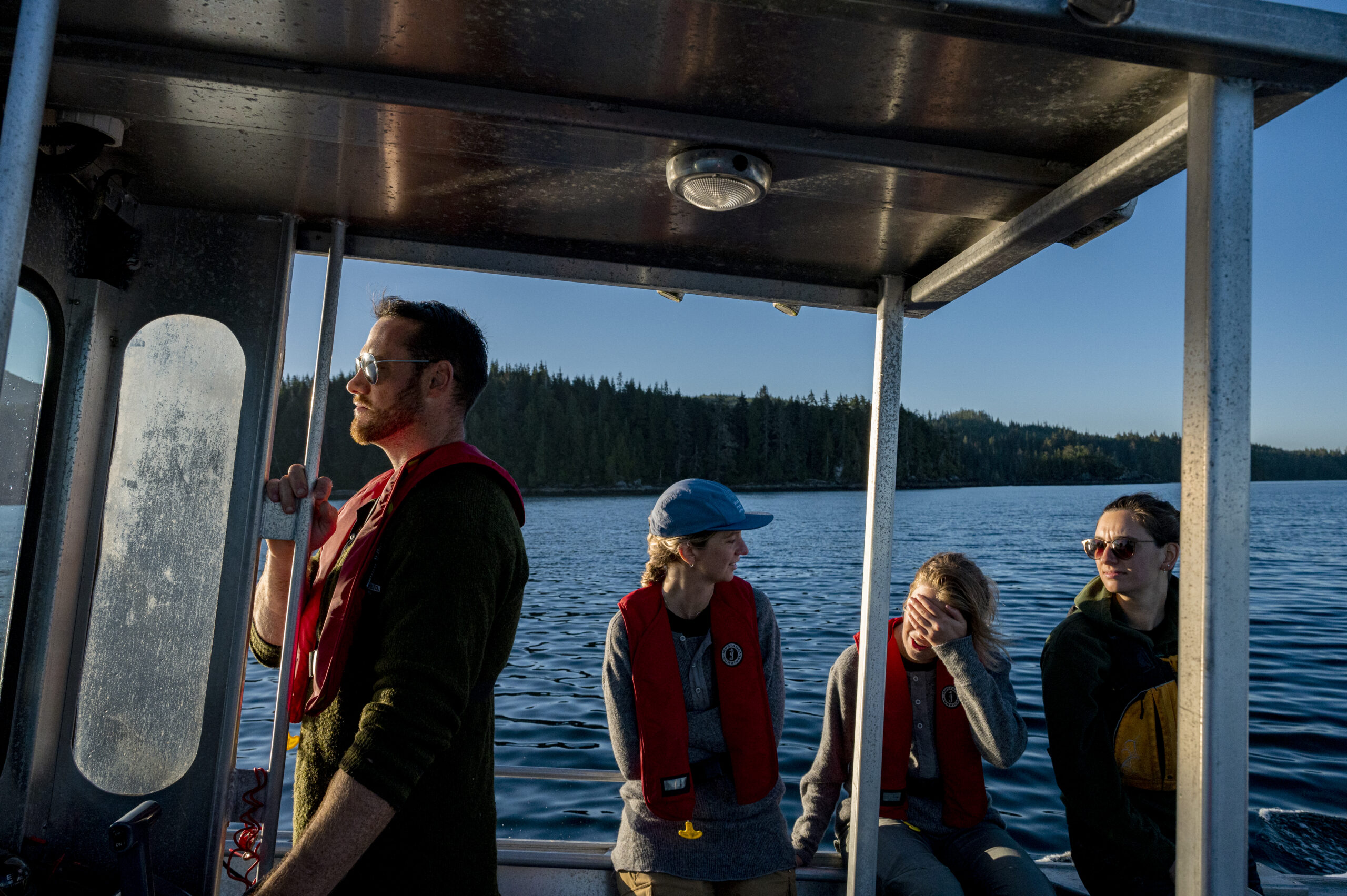
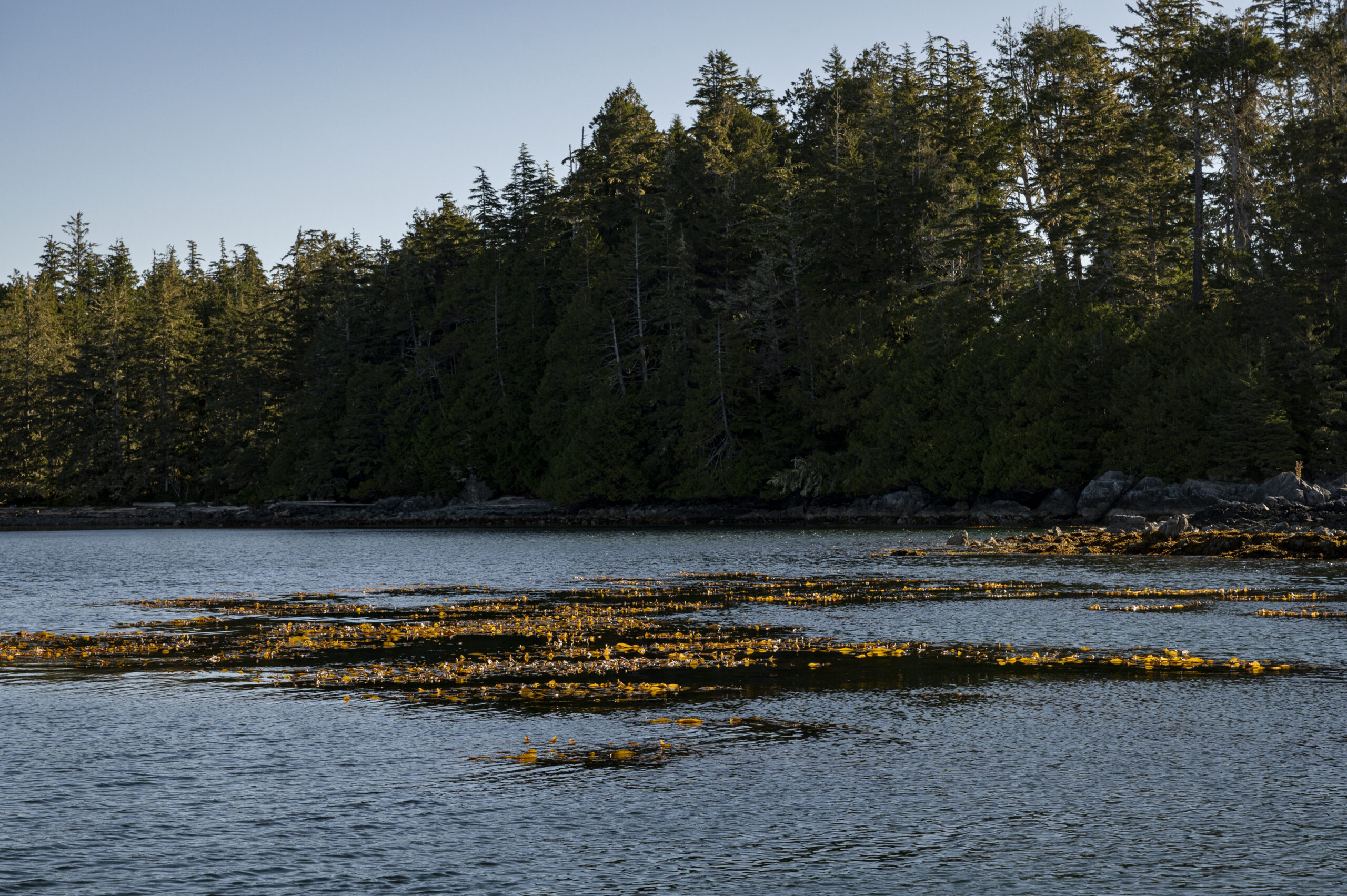
Cox steers the boat out toward Barkley Sound. He picks up speed as we clear the inlet and the boat heaves with each peak and valley of the ocean swell. His colleagues, Claire Attridge and Em Lim, both graduate students in Simon Fraser University’s department of biological sciences, and Bridget Maher, field technician and manager of the Juanes lab at the University of Victoria, lean against the gunwale, smiling and chatting easily under sunny blue skies. We pass a flock of nesting seabirds and a beach known locally as necropsy bay for the whale autopsies that happen there. Cox cuts the motor just offshore from Edward King Island and the anchor is tossed overboard.
It was here that Cox first tested his hypothesis with a trial noise experiment. When the results came in he was “really excited.” They indicated kelp forests can dampen ocean noise pollution, blocking sound waves in much the same way they impede waves of water. “So we know it’s somewhat a thing,” he said.
More than that, it could be significant for fish and other species that may struggle to be heard above the din of shipping traffic, according to Francis Juanes, the Liber Ero Chair for Fisheries Research at the University of Victoria and one of Cox’s collaborators.
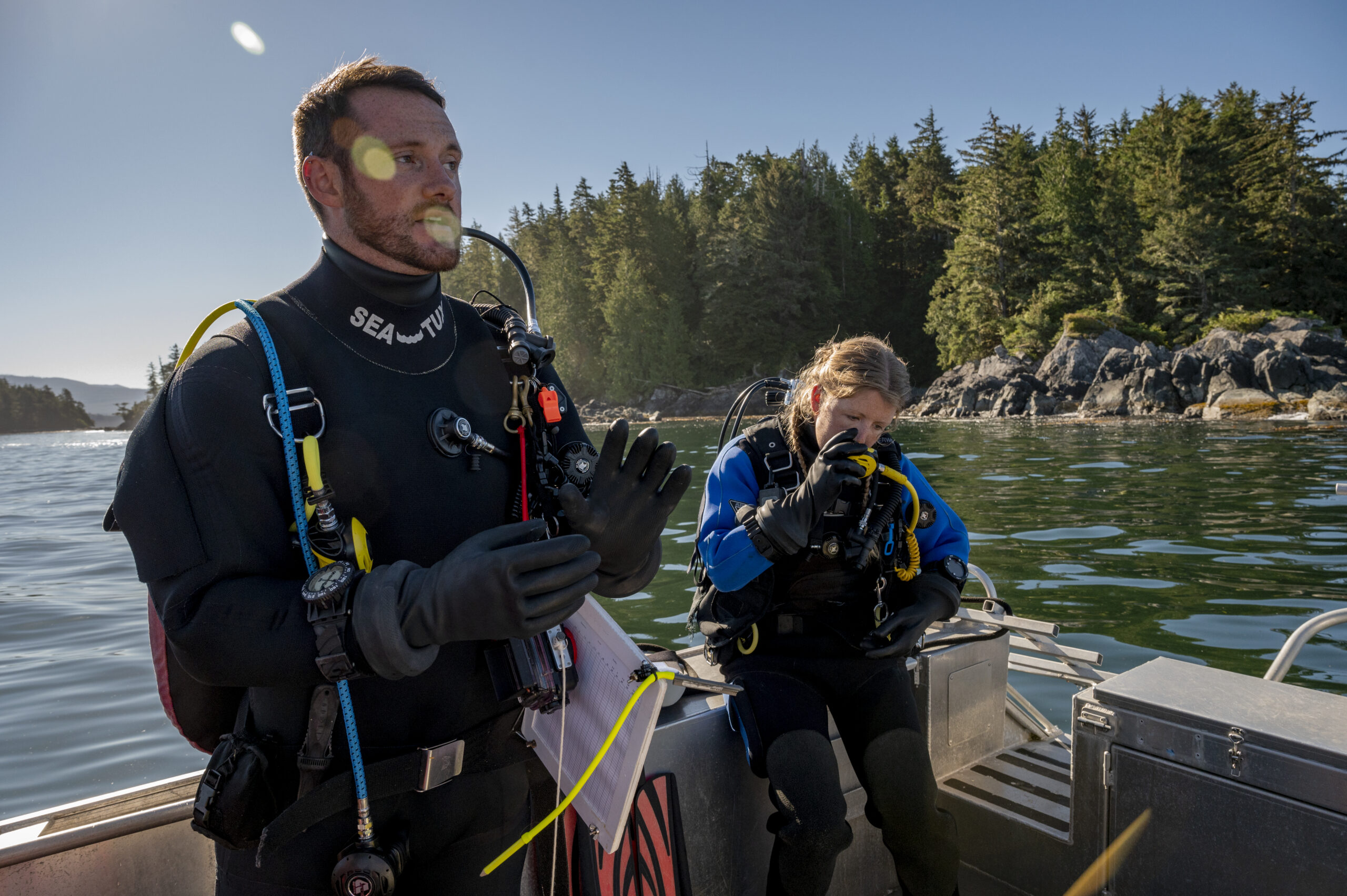

“If these habitats are able to somehow provide refuge from [noise], that could be really, really important,” he said. Think of rockfish. “Almost all of them, as far as we know, are soniferous, meaning they produce sounds, but their sounds are not very loud,” Juanes said. In other words, they’re easily lost in a sea of noise.
That noise could also be a problem for federal scientists working to develop new ways of monitoring fish populations by sound. That’s still a ways away, according to Dana Haggarty, the groundfish section head in the stock assessment and research division at Fisheries and Oceans Canada. But even if scientists can establish a clear relationship between fish sounds and fish abundance — how do you measure what you can’t hear?
At this point, Cox is hesitant to put numbers to a kelp forest’s ability to block noise. He’s still analyzing the data he collected last summer, and planning additional field work this year, but so far, his trial results are holding true. By quieting noise, kelp forests are “conserving the soundscape” for the species that inhabit them, Cox said. He still has plenty of data left to parse. Is kelp better, for instance, at blocking noise at certain pitches? And, how does it change with density — as forests thin, do they still offer sanctuary? Cox and other scientists are asking similar questions about coral reefs and seagrass meadows in the Caribbean Sea.
Even in late summer, the Pacific at this latitude can be chilly — for humans anyway — so Cox and Attridge are using dry suits. Cox pulls his over shorts and a t-shirt; Attridge, who tends to get cold, layers a fleece onesie under hers. With air tanks strapped to their backs, the pair roll off the sides of the boat into the water. They swim toward a rocky outcrop, the tips of the kelps, held up by gas filled bulbs called pneumatocysts, barely visible at surface.
Underwater, it’s magical. Specks of sediment sparkle in beams of sunlight, as brown kelps and vibrant green eelgrass sway this way and that with the surf. The forest is dense and varied. There are kelps that look like feather boas, others more like abstract sculptures of people, lush hair flowing from their tiny, bulbous heads.

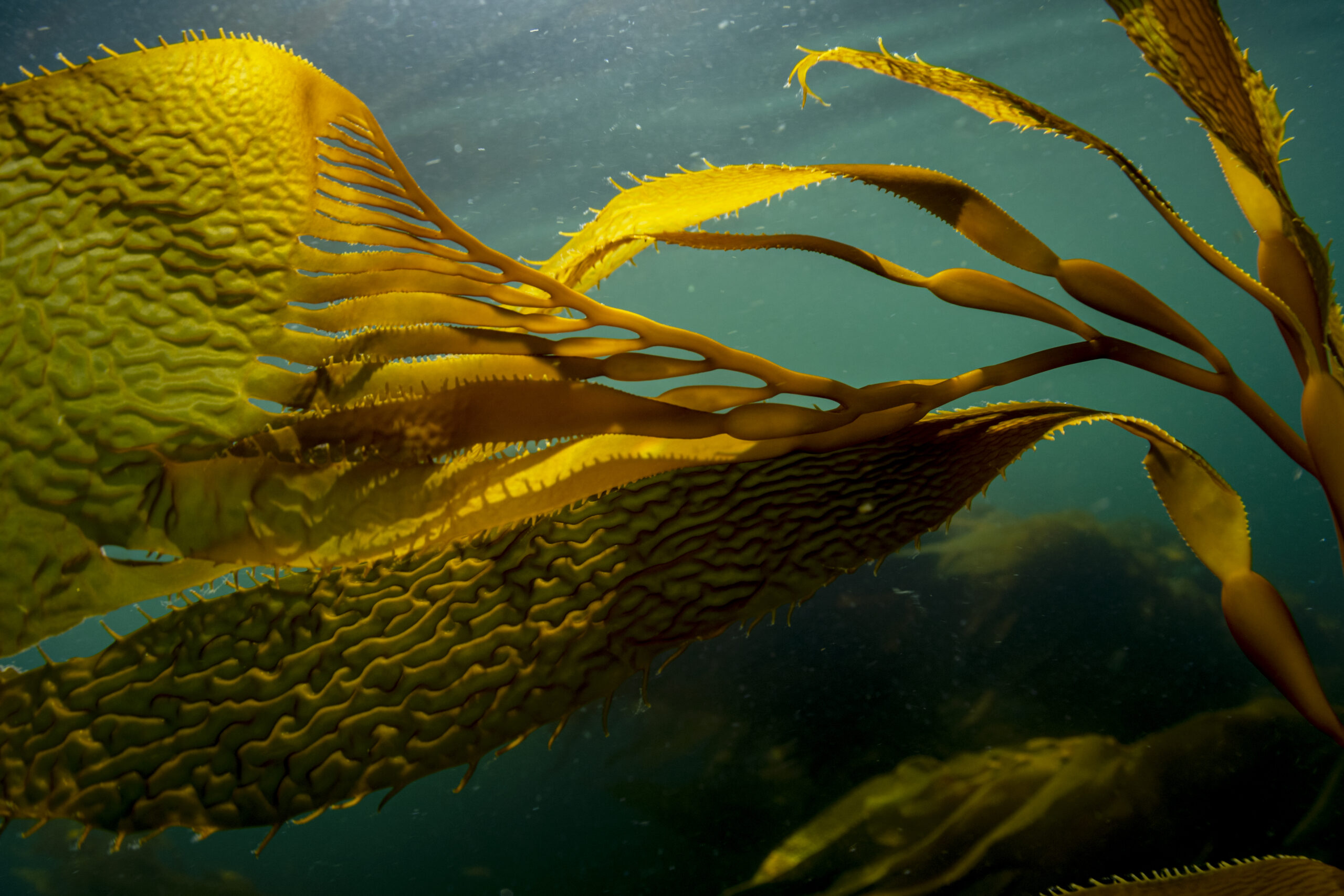
Cox was sitting in a kelp forest off the coast of Victoria, bubbles rising from his regulator, when he first noticed the stillness amid the towering stalks. His mind wandered to the forests on land, the way urban noise melts away among the trees. That’s when he started to wonder if forests could shelter sensitive creatures from sonic overload underwater too.
There’s growing urgency to this question. Climate change is killing kelp even as it’s turning up the volume underwater. In some ways, Barkley Sound, where waters in the inner coastal areas tend to be warmer than the outer coast, offers researchers a glimpse into the future. The 2014 to 2016 marine heatwave, colloquially known as the blob, decimated many kelp forests in the inner reaches of Barkley Sound, according to a 2022 study published in the journal Ecological Applications. While some kelps found refuge in deeper waters, for others, this escape from the heat was blocked by a surge of sea urchins — spiny red and purple globes with an insatiable appetite for kelp.
At one time, urchins were kept in check by otters and sunflower sea stars. But otters were wiped out by the fur trade in the 1800s and they’ve been largely missing from Barkley Sound since then, the study said. More recently, sunflower sea stars have succumbed to a wasting disease that rots their bodies until they fall apart and die. As the blob hastened the disease’s spread, urchins flourished.
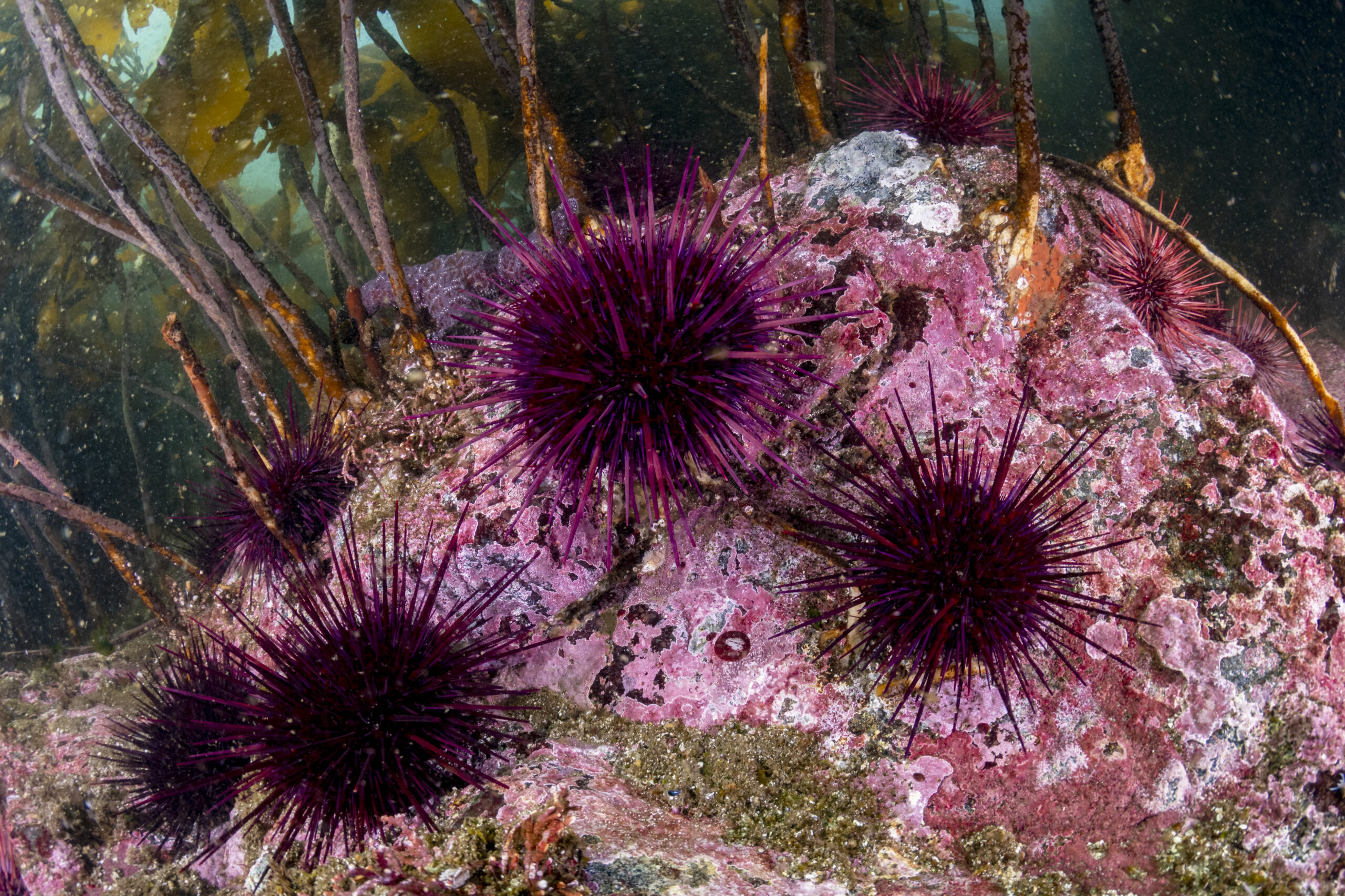
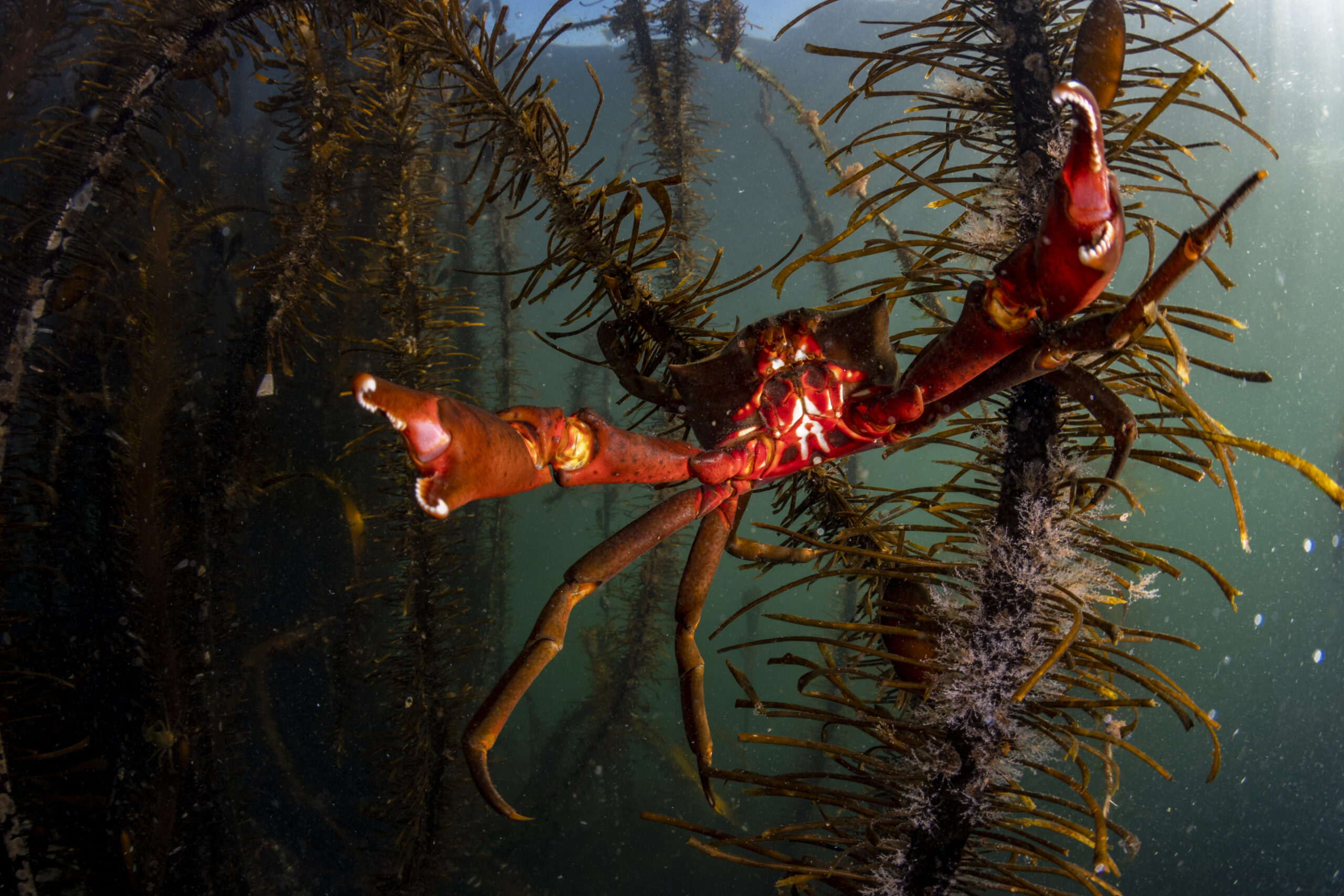

As kelp forests thin, they may also be falling victim to a negative feedback loop. Lim is investigating the importance of sea creatures’ pee as a source of nutrients for kelp using water samples pulled from some of the same forests Cox is studying. The rich, deep waters drawn upwards when wind pushes the surface layers of the ocean away from shore are a major source of nourishment for kelp forests. But the nutrients in urine are easier for kelp to absorb, making pee an “important helper,” Lim said. In the lab, they mix each sample with a chemical that fluoresces when it reacts with ammonium, a key component of pee that acts as a fertilizer. They use a fluorometer, which measures how much of the sample is aglow, to determine the ammonium concentration. While their results are preliminary, with more field work planned for this summer, it seems kelp forests whittled away by climate change and urchins retain less of that nutritious pee further limiting their growth. It’s yet another blow.
Underwater, Cox and Attridge roll 50 metres of bright yellow measuring tape across the forest floor. They wait a few moments for the water to settle then slowly swim above the tape, using pencil and waterproof paper to note every fish — from tubesnouts and rockfish to striped surfperch and kelp greenling — they spot. At the end, they sink lower, and return along the same route, this time keeping a watchful eye for invertebrates like sea cucumbers, kelp crabs and, of course, urchins.
As part of her graduate research Attridge is studying how the community of species that inhabit the kelp forests of Barkley Sound change as those forests decline. Those insights will help Cox make sense of his own findings. If kelp forests dampen the noisy ocean, which sea creatures are reaping the benefits?
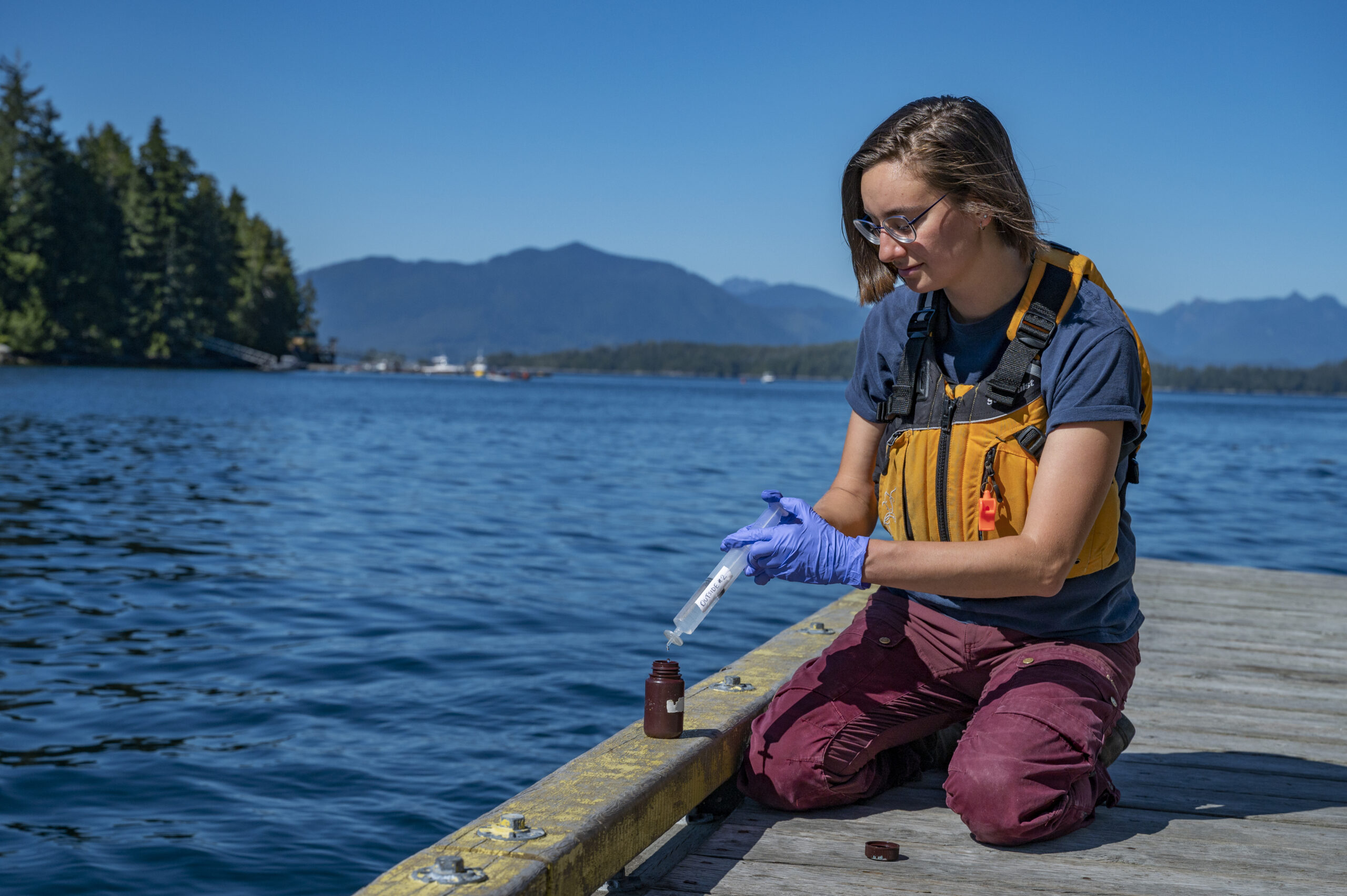
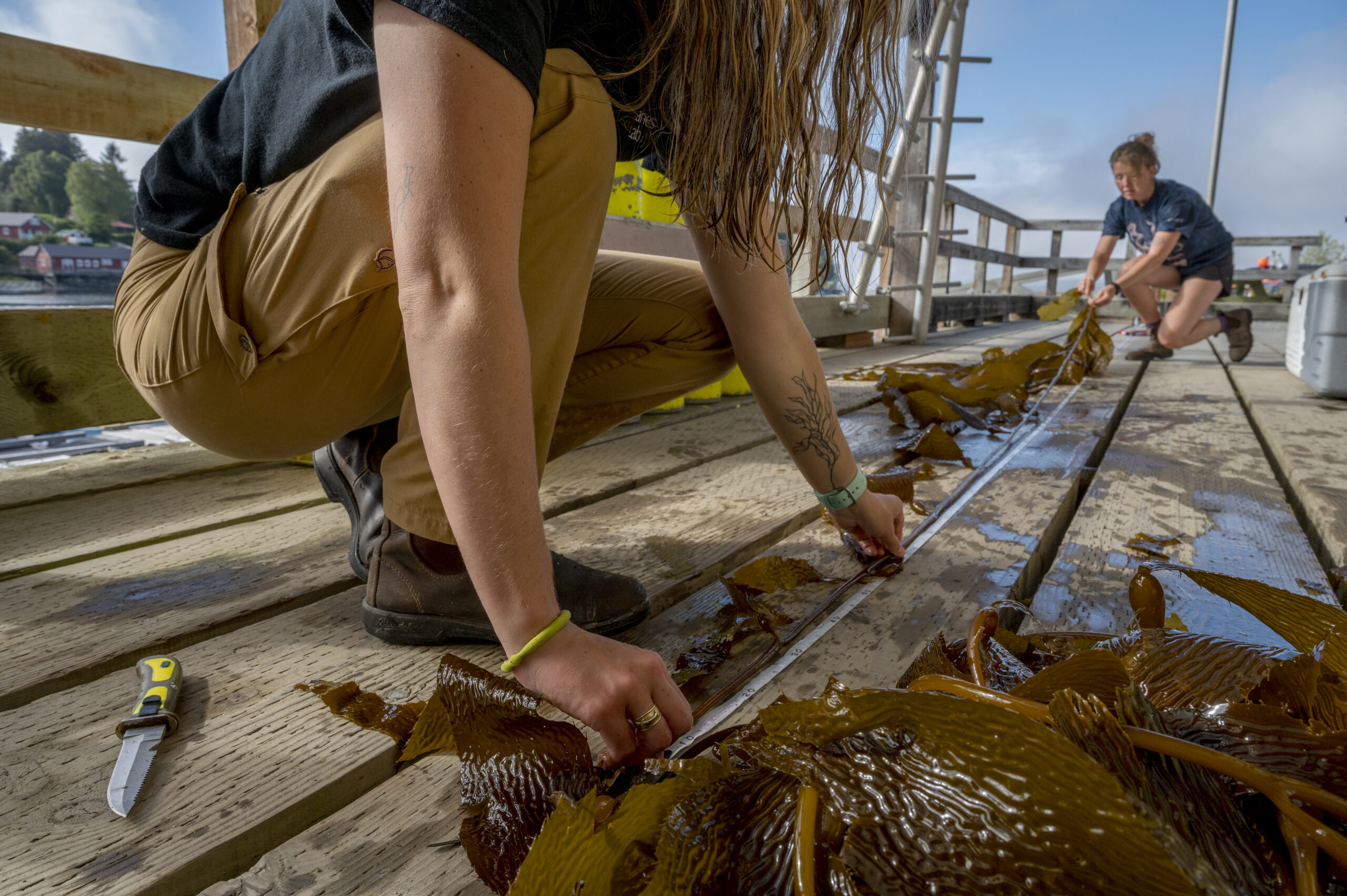

Underwater, the researchers count each kelp in a handful of five metre by one metre grids to measure the density of the forest. They’re interested in the height of the canopy too, but their air supply is limited so they take samples back to shore. At the dock in Bamfield, Maher and Attridge pull a kelp from a yellow mesh bag and lay it alongside a measuring tape. One comes in at 293 centimetres, another slightly longer at 315. Each sample is then weighed to estimate the biomass of a forest — a proxy for its overall condition — and then returned to the sea.
“Some forests were very, very tattered, they had few blades left, and there were some really skinny kelps. Other forests had really healthy, robust, large blades,” Attridge said. By weighing kelp samples from each site she’s able to describe those differences not only with words, but with numbers too. Attridge is still working to parse the data she collected last summer, but so far she can say the 22 kelp forests she’s studying break down into four perceptible groups, ranging from the very lush to the thin and barely there. Now, she’s starting to dig into the data about the different fishes and invertebrates that inhabit these sites and how those communities shift and morph with the state of the forest.
Each day before climbing the short, steep hill back to the cabins, the team thoroughly rinses their gear in freshwater. As Attridge warns, “that salt water, it corrodes.” As their suits drip dry, they settle in for lunch and several hours of computer work.
This is the “rinse and repeat” (Cox’s catchphrase for the summer) stage of data collection. And so, the team is back on the water the next morning, headed to Danger Rock. But instead of speakers and hydrophones, the researchers carry cameras. It’s one of those rare days they get to focus on enjoying — and photographing — rather than studying the ecosystems they are working to understand.
The Danger Rock kelp forest isn’t the densest of their study sites, but it teems with fish, starfish and brightly coloured sea slugs. Back on the boat, they’re excited to share photos of the creatures they saw. A shimmering school of herring, a carpet of strawberry anemones and what Lim called the “most photogenic” clown nudibranch. But the kelps are also surrounded by a field of sea urchins — an inescapable reminder that these forests are in danger.

Updated March 27, 2023, at 2:10 p.m. PT: This story has been updated to adjust the term ‘oxygen tank’ to ‘air tank’ because only non-divers call them oxygen tanks, we have learned.

